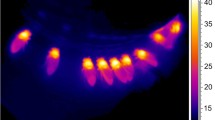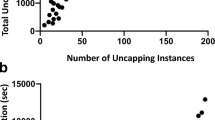Abstract
A honeybee colony has to choose among several nectar sources in the environment, each fluctuating in quality over time. Successful forager bees return to the hive and perform dances to describe the food sources they have found. Each dancer tries to recruit other forager bees to fly to the source it has found. Some individual dancers clearly dance longer for higher quality sources, other dancers distinguish little between poor and good sources; presumably the differences are genetically based [6].
Our multi-agent simulation showed that this individual heterogeneity results in optimal collective exploitation of the environment. Under all tested environmental conditions near-natural heterogeneous colonies worked more efficiently than artificially homogeneous ones. In heterogeneous colonies, dances last sufficiently long to recruit an appropriate number of waiting dancefollowing bees. In homogeneous colonies with good discriminating bees, the dances last longer than is efficient; the extra dancing decreases net food gains per time.
Preview
Unable to display preview. Download preview PDF.
Similar content being viewed by others
References
Dorigo, M., Stützle, T.: Ant colony optimization. MIT Press, Cambridge (2004)
Frisch, K.V.: Tanzsprache und Orientierung der Bienen. Springer, New York (1965)
Kennedy, J., Eberhart, R.C.: Swarm intelligence. Academic Press, San Francisco (2001)
Ratnieks, F.L.W., Anderson, C.: Task partitioning in insect societies. II. Use of queueing delay information in recruitment. Am. Nat. 154, 536–548 (1999)
Schmickl, T., Crailsheim, K.: Cost of environmental fluctuations an benefits of dynamic foraging decisions in honey bees. Adapitve Behavior 12, 263–277 (2004)
Seeley, T.D.: Honey bee foragers as sensory units of their colonies. Behav. Ecol. Sociobiol. 34, 51–62 (1994)
Author information
Authors and Affiliations
Editor information
Editors and Affiliations
Rights and permissions
Copyright information
© 2005 Springer-Verlag Berlin Heidelberg
About this paper
Cite this paper
Thenius, R., Schmickl, T., Crailsheim, K. (2005). The “Dance or Work” Problem: Why Do not all Honeybees Dance with Maximum Intensity. In: Pěchouček, M., Petta, P., Varga, L.Z. (eds) Multi-Agent Systems and Applications IV. CEEMAS 2005. Lecture Notes in Computer Science(), vol 3690. Springer, Berlin, Heidelberg. https://doi.org/10.1007/11559221_25
Download citation
DOI: https://doi.org/10.1007/11559221_25
Publisher Name: Springer, Berlin, Heidelberg
Print ISBN: 978-3-540-29046-9
Online ISBN: 978-3-540-31731-9
eBook Packages: Computer ScienceComputer Science (R0)




